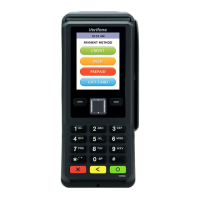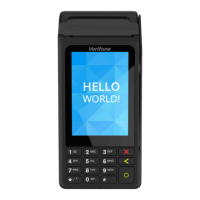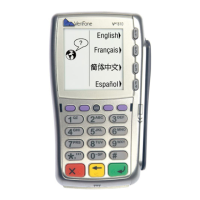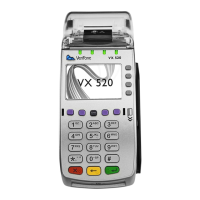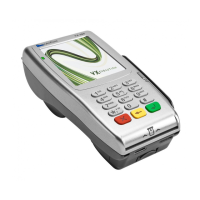Do you have a question about the VeriFone V200c and is the answer not in the manual?
Provides an outline of the terminal features.
Details the various communication options available on the terminal.
Discusses the terminal's processing power, memory, and display capabilities.
Covers PCI PED 4.x approval, tamper resistance, and encryption.
Explains normal and system modes for keyed data entry.
Details how to use the 12-key keypad for ASCII character entry.
Describes the purpose of terminal function keys like Cancel and Enter.
Identifies roles (programmers, deployers, admins) for using System Mode.
Procedure to access System Mode via key presses and login.
Details handling of passwords for System Mode access and security.
Overview of the System mode interface and available submenus.
Explains VeriShield security architecture and file authentication.
Describes Verifone's role in managing keys and certificates.
Outlines the three basic processes: Request, Development, Deployment.
Details how to use the tool to sign executable and other files.
Details terminal connectivity options for data transfers.
Explains available methods like Direct Download and Netloader.
Provides syntax and options for the Direct Download utility.
Explains the requirement for file signing and signature files.
Lists and explains various error messages encountered in System Mode.
Lists and explains various information messages displayed on the terminal.
Provides detailed pinout tables for various terminal connectors.
Presents an ASCII table for reference on the V200c display.
| Memory | 64MB SDRAM |
|---|---|
| Touchscreen | Capacitive |
| Connectivity | Ethernet, RS-232, USB |
| Operating System | Verix |
| Card Readers | Triple track MSR, EMV smart card reader, Contactless NFC |
| Power Supply | AC input 100-240V, DC output 5V |
| Operating Temperature | 0°C to 40°C |
| Certifications | EMV Level 1 and 2, PCI |
